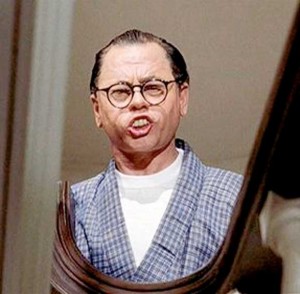
Growing up, I didn’t think much about it, but seeing old Westerns now, it’s amazing to me that movies got away with casting white people in the roles of American Indians or Mexicans — almost always as “bad guys.”
Seeing these movies today, you could tell they’re not ethnic actors, and could almost see the smudges from the makeup smeared over their faces and hands. It wasn’t any more sophisticated than the blackface makeup white actors wore to play African American roles in silent movies or the early talkies, wide-eyed, shiny black visages like masks, singing about “mammy.” You don’t see that any more, at least, not with blacks and Latinos.
Hollywood also has a long and tiresome tradition of “yellowface” — having Caucasian actors portray ethnic Asian roles. And, unfortunately, you can still see that on the big screen today.
 The most famous early examples of yellowface are the various actors from Warner Oland and Boris Karloff to Peter Sellers who played the evil, inscrutable Fu Manchu; Oland and Sidney Toler as the detective Charlie Chan in a series of hit movies; and the German-born, diminutive Peter Lorre as the Japanese detective Mr. Moto in another string of movies.
The most famous early examples of yellowface are the various actors from Warner Oland and Boris Karloff to Peter Sellers who played the evil, inscrutable Fu Manchu; Oland and Sidney Toler as the detective Charlie Chan in a series of hit movies; and the German-born, diminutive Peter Lorre as the Japanese detective Mr. Moto in another string of movies.
Even the great Katharine Hepburn, one of my favorite actresses, put on yellowface, to play a Chinese woman in the 1944 movie “Dragon Seed.” Continue reading







 I finally saw Peter Jackson’s 2005 remake of “
I finally saw Peter Jackson’s 2005 remake of “





